Shadwell Warehouse
Thirty years ago ‘The Highway’ in Shadwell accommodated empty warehouses which overlooked the River Thames. They have since been demolished or converted into luxury flats. I recall exploring one warehouse which was opposite the Shadwell Centre (which remains as a public building). It was clear that the building had remained empty and undisturbed for decades.
Proof of this was the letters I photographed on the floor of the warehouse dated 1943 to the British Channel Islands Shipping Co. Ltd from ‘Coast Lines Ltd’. The ship the ‘Windsor Queen’ mentioned in the letter was Captained at the time by George Colverson who was born on the 8th February 1882. According to the Knottingley and Ferrybridge local history library Captain Colverson concluded his maritime career on the Windsor Queen: “To complete the record of the ships commanded by Captain Colverson, we will jump to 1943, to find him at the helm of the ’S.S. Windsor Queen’ 1,390 tons deadweight, just delivered from Burntisland. The ’Windsor Queen’ came in for her share of attacks from aircraft and E-boats (motor torpedo boats) while on the east coast run, to feed the fires of southern England with Tyneside coal, and in addition, was in the port of London during a particularly venomous attack by flying bombs. A large proportion of these missiles fell in the Thames Estuary and dock areas, and on this occasion several landed in uncomfortable proximity. The ’Windsor Queen’ however, continued on her voyages unharmed to the end of the war. Captain Colverson was awarded the M.B.E. for his wartime service, and no man’s record in the Merchant Navy can more worthily have merited this recognition.”
Looking west (above) a frugal collection of buildings punctuate the horizon compared to today’s skyline. On the right of the photograph are the remains of the lift shaft. The shafts stripped down dereliction hints at a gallows construction which in turn speaks of the end of an era.
The photograph (above) shows how the City has grown since 1982. A contemporary photograph from the same spot would reveal the frenetic building of towers which has occurred in recent years.
The opening (above) allowed goods to be hauled in or out. It reveals two types of housing that characterised Tower Hamlets for many years: older terraced housing and newer municipal Council blocks.
I wonder now what stories might have been revealed by the myriad of abandoned documentation. All of it would have disappeared in the demolition or refurbishment into luxury apartments.


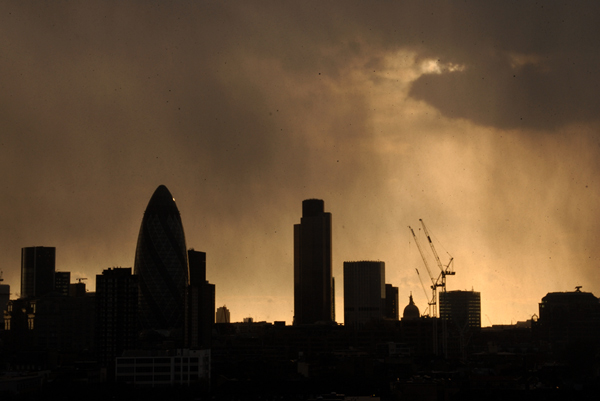

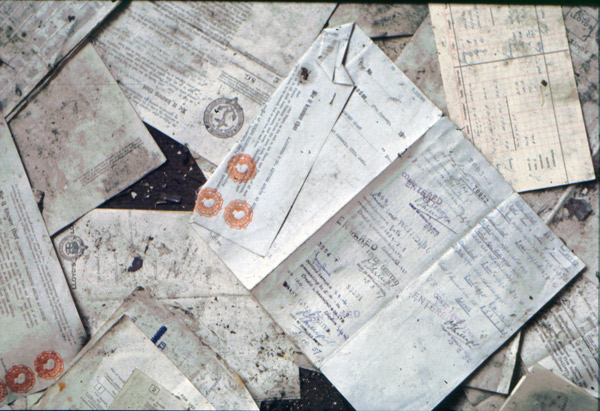



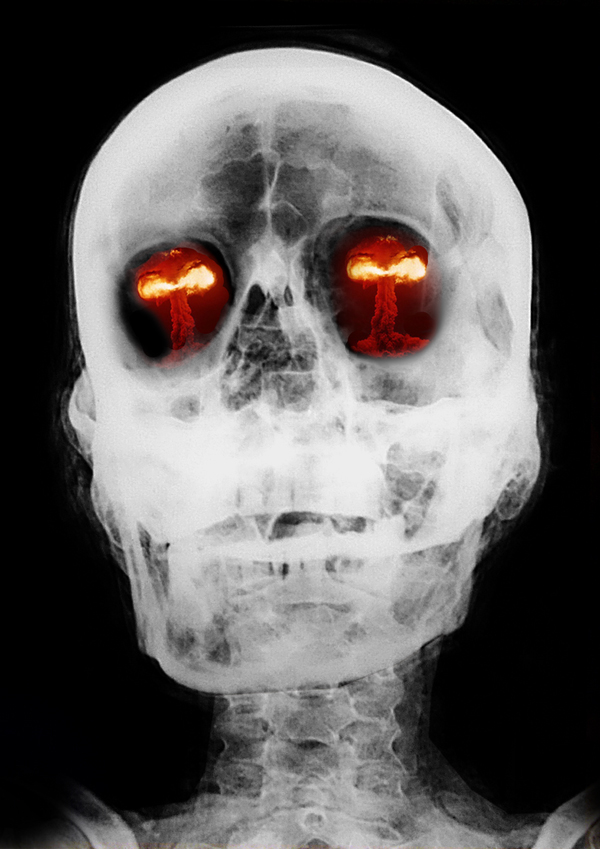




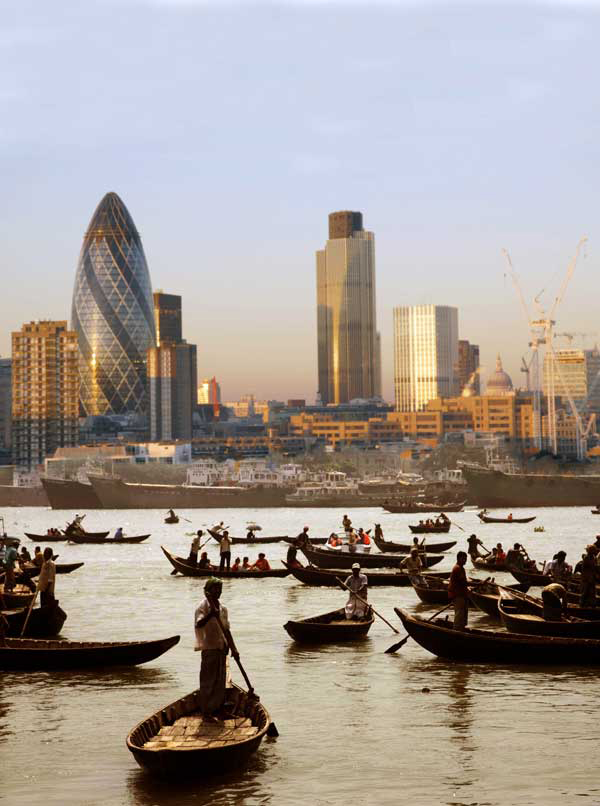
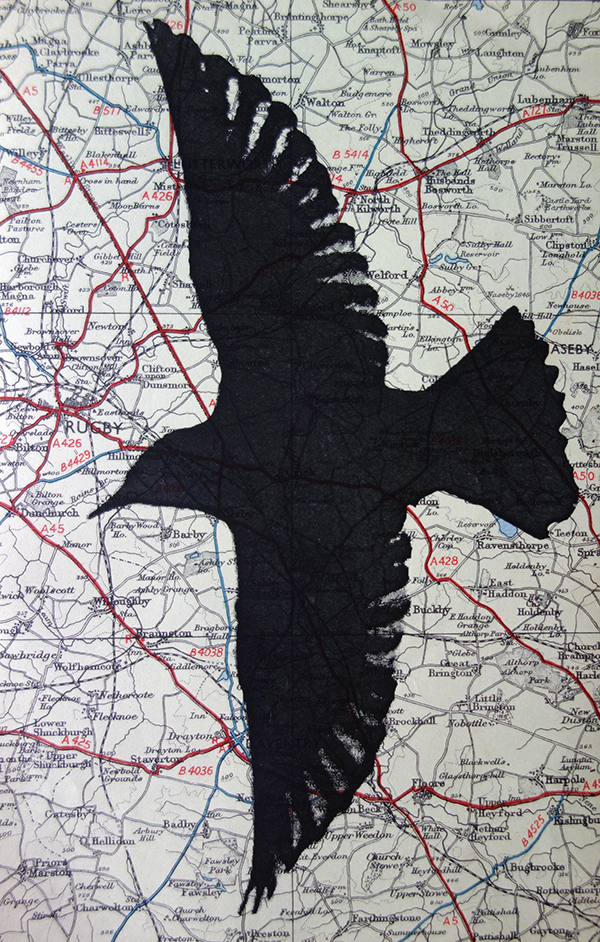




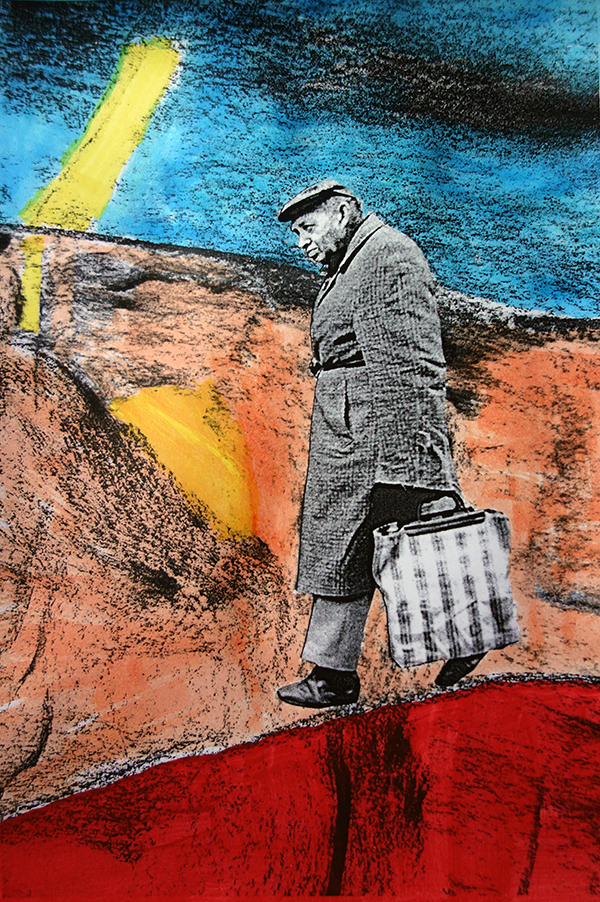




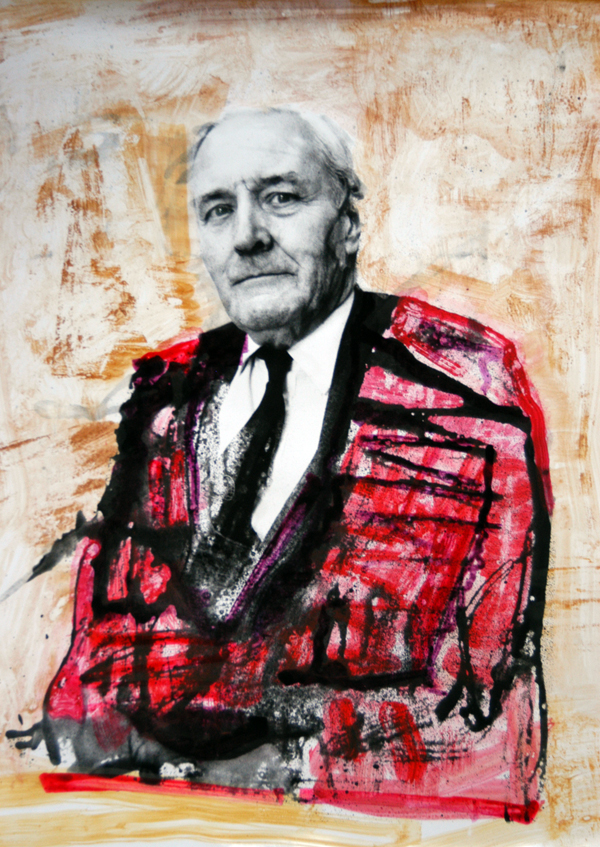





Some great photos in this article.
The Council Tower Block is Gordon House – I lived there in 1982!